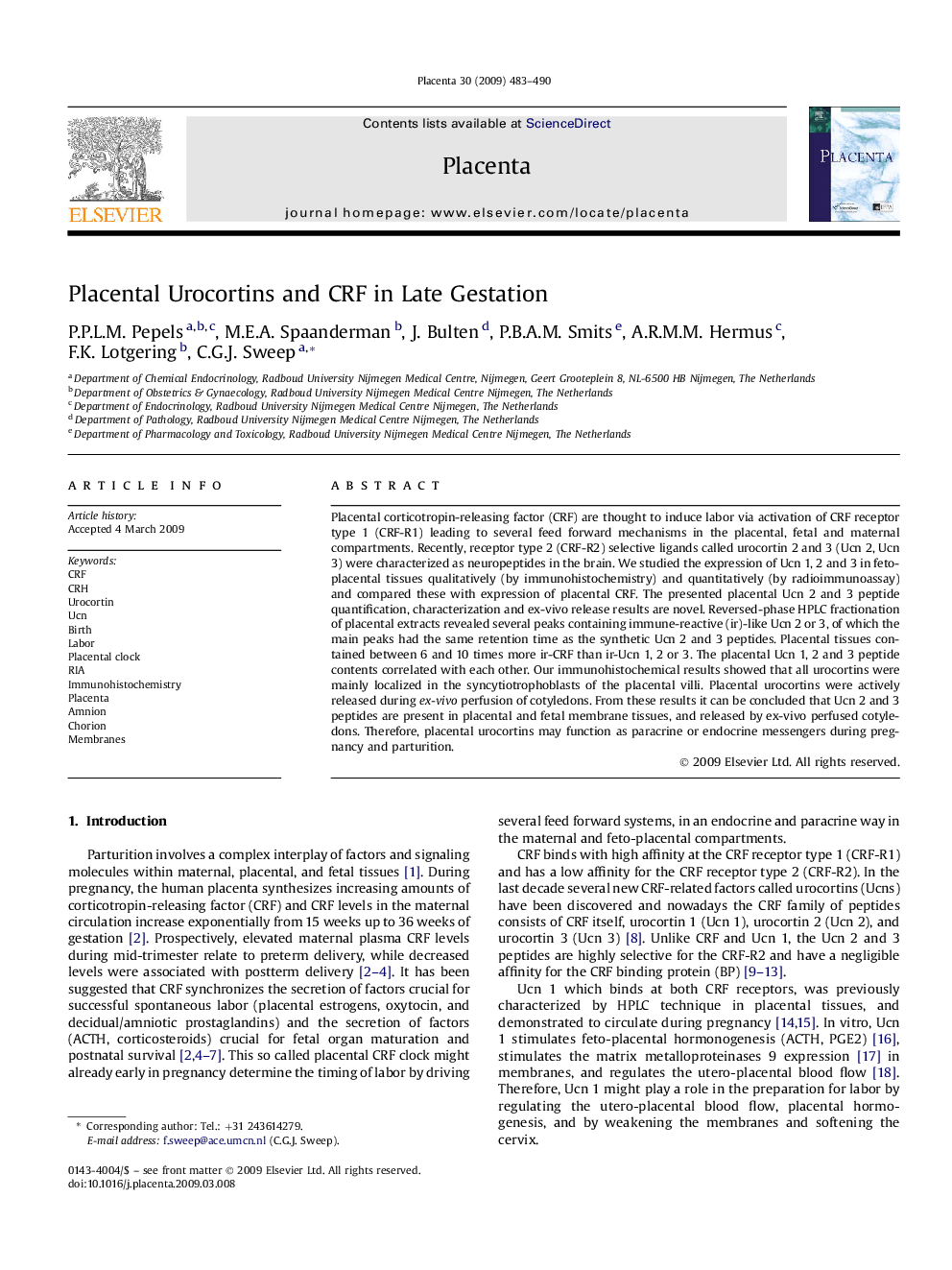| Article ID | Journal | Published Year | Pages | File Type |
|---|---|---|---|---|
| 5895971 | Placenta | 2009 | 8 Pages |
Abstract
Placental corticotropin-releasing factor (CRF) are thought to induce labor via activation of CRF receptor type 1 (CRF-R1) leading to several feed forward mechanisms in the placental, fetal and maternal compartments. Recently, receptor type 2 (CRF-R2) selective ligands called urocortin 2 and 3 (Ucn 2, Ucn 3) were characterized as neuropeptides in the brain. We studied the expression of Ucn 1, 2 and 3 in feto-placental tissues qualitatively (by immunohistochemistry) and quantitatively (by radioimmunoassay) and compared these with expression of placental CRF. The presented placental Ucn 2 and 3 peptide quantification, characterization and ex-vivo release results are novel. Reversed-phase HPLC fractionation of placental extracts revealed several peaks containing immune-reactive (ir)-like Ucn 2 or 3, of which the main peaks had the same retention time as the synthetic Ucn 2 and 3 peptides. Placental tissues contained between 6 and 10 times more ir-CRF than ir-Ucn 1, 2 or 3. The placental Ucn 1, 2 and 3 peptide contents correlated with each other. Our immunohistochemical results showed that all urocortins were mainly localized in the syncytiotrophoblasts of the placental villi. Placental urocortins were actively released during ex-vivo perfusion of cotyledons. From these results it can be concluded that Ucn 2 and 3 peptides are present in placental and fetal membrane tissues, and released by ex-vivo perfused cotyledons. Therefore, placental urocortins may function as paracrine or endocrine messengers during pregnancy and parturition.
Related Topics
Life Sciences
Biochemistry, Genetics and Molecular Biology
Developmental Biology
Authors
P.P.L.M. Pepels, M.E.A. Spaanderman, J. Bulten, P.B.A.M. Smits, A.R.M.M. Hermus, F.K. Lotgering, C.G.J. Sweep,
